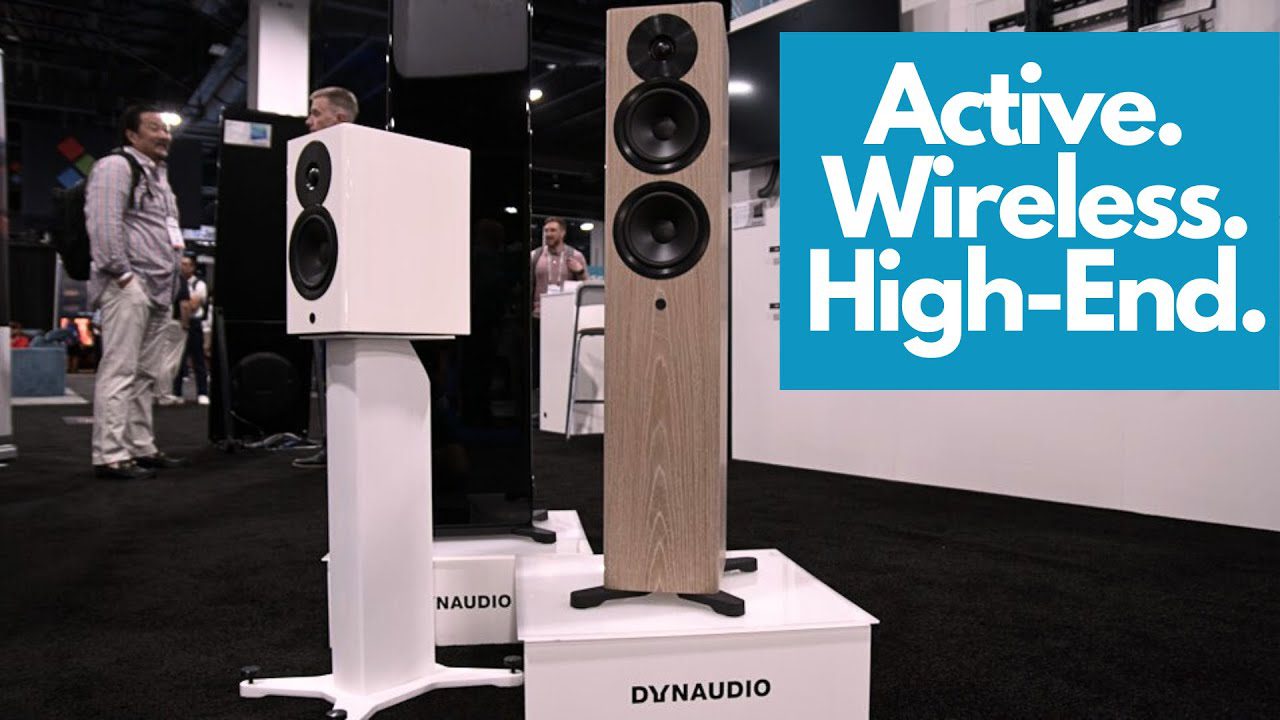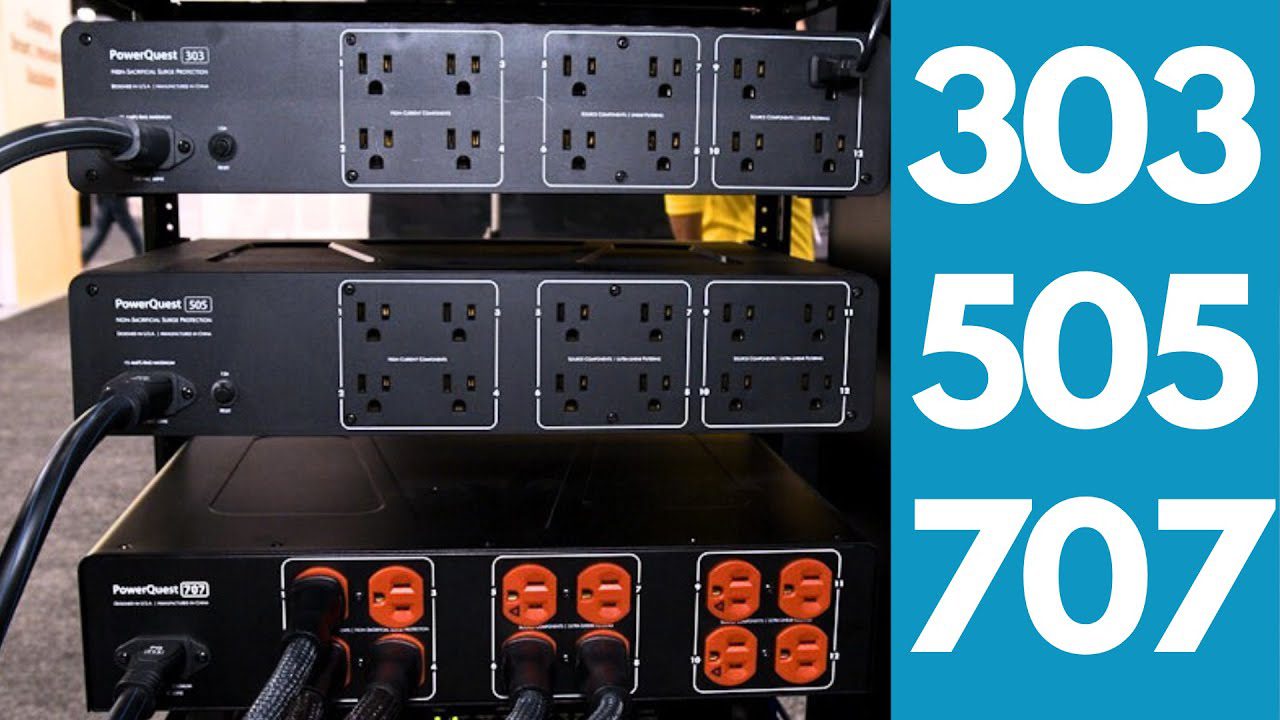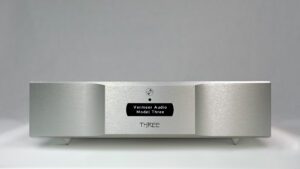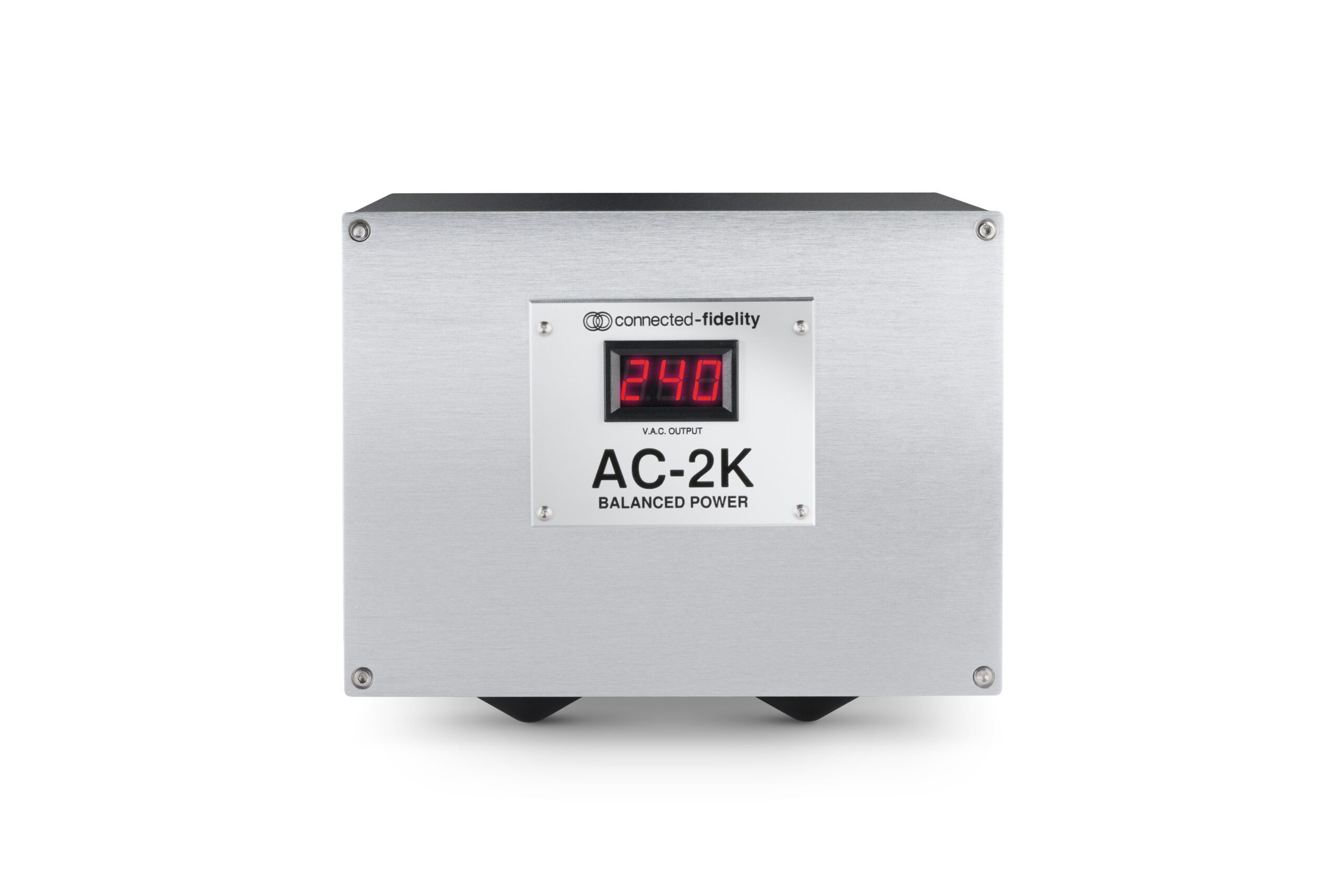
It always comes back to the mains. Perhaps one consolation of living in these densely populated British Isles is that a majority of the population lives within a few stones’ throw of a distribution sub‑station. And we have a well-regulated supply that usually stays well within tolerance of the mandated 230V AC +10/–6 % and 50 Hz ±1 %. But the amount of RF noise riding on the mains is only going up as the modern world relies on increased use of radio and microwave communications, outside and in the home.
One way to counter such unwanted interference is to convert the conventional mains feeding the system electronics into a balanced mains supply, using the same principle as balanced signal interconnections via XLR socketry between devices – creating phase and anti-phase waveforms that can cancel out external intrusion through common-mode noise rejection.
Turning Live
In the case of mains power, that means turning Live and Neutral lines into ±120V AC, and using a centre-tapped earth on a transformer as a new 0V ground connection. Balanced mains solutions are already used in hospitals and recording studios and the technology is becoming more popular for home audio systems. To power a complete system does demand a decent-sized transformer with capacity to spare, which usually means a large and massive box weighing tens of kilos.
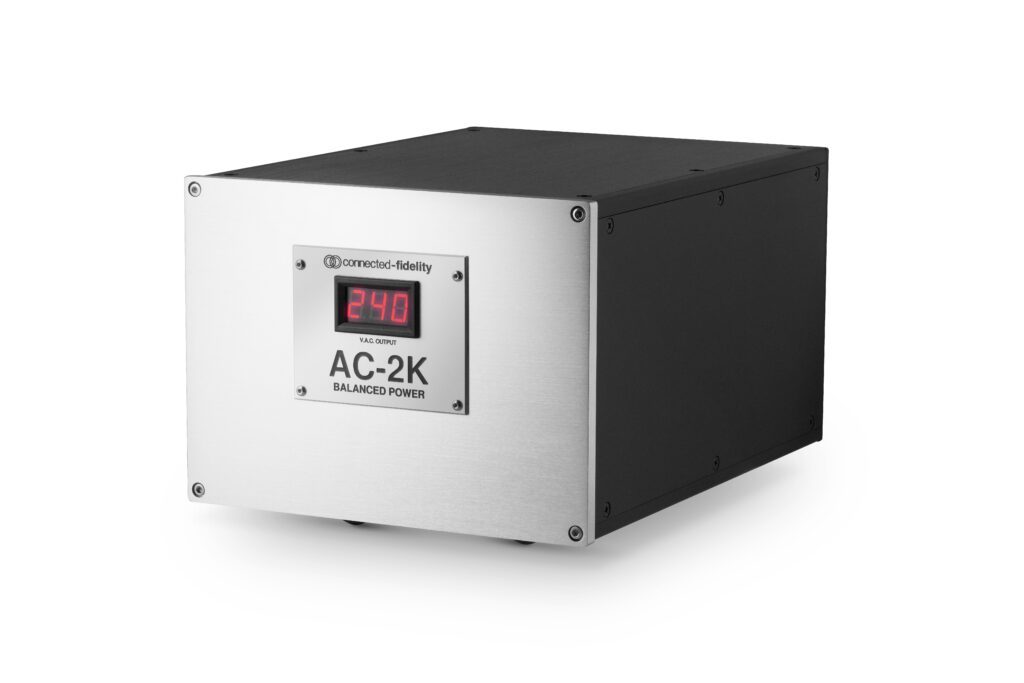
From new brand Connected Fidelity we have the AC-2K, a balanced mains transformer built into a sturdy aluminium chassis with output voltage indicator on its front. Connected Fidelity is a sub-brand of distributor Air Audio, founded by Michael Osborn and better known as the founder of Astin Trew, and latterly the importer of Hana moving-coil cartridges from Japan.
The AC-2K’s 2000VA-spec toroidal transformer should have the headroom to allow not just low-power source components but amplifiers too up to a few hundred watts of rated power. In fact, and in defiance of many mains treatment solutions I’ve tried with power amps, from the outset it was the amplifier that responded most positively to this new balanced supply.
The black anodised case with brushed natural front is large but not huge at 23cm wide and 18cm high, extending back 33cm, and at almost 17kg it is still relatively man-liftable. The rear panel as standard has just one UK mains outlet and a 20A IEC power inlet. Other options are available to order, including two UK mains outlets, and EU or US outlets.
Power cord? Nein danke
There’s no power cord provided with AC-2K; Connected Fidelity is primarily a cable company so upsell opportunities are available. The test unit was supplied with a new cable just added to the range, the Chronos 2 (£840). It’s based on a braided weave of cryogenically treated multistrand UP/OCC copper and silver-plated copper wires, totalling 12 square millimetre for each of the two power lines, terminated with Furutech IEC and MS HD Power UK plugs.
Inside the box, protection circuitry on the balanced output side is specified as two residual current circuit breakers with overcurrent protection (RCBO). On the input side is a soft-start relay switch to reduce switch-on surge. The toroidal transformer is mounted on a compliant anti-vibration support plate, with transit screws to secure the mass when packed for shipping. And in a bid to extract the best performance from this transformer, it undergoes deep cryogenic treatment prior to installation in AC-2K, cycled by a commercial specialist down to –195 °C in a process that is said to benefit the ferrous core of the transformer by increasing the proportion of martensite and decreasing austensite in the steel’s crystalline structure. And since the toroid is treated complete with its copper wiring, there may be positive effects of cold annealing on the primary and secondary windings.
Cryogenic treatment is also advertised for the internal fuse and wiring as well as the PCB and its components, but not the Chtai mini circuit breakers or Songle soft-start relay, which would not safely survive a deep-freeze treatment.
In use the AC-2K remained blissfully silent, with no trace of background hum from its transformer. Nor did it trip the consumer unit on switch-on, which I’ve encountered with other balanced mains solutions. Inspired by pro units like the Equitech Model Q, there’s a voltage output display, thankfully switchable and kept off for listening, with even the company admitting it has an impact on sound quality. Referenced to other voltage meters it also seemed not particularly accurate either, consistently reading over 4V too high. There is a bare-bones ‘Studio’ version of the AC‑2K (£1,995) without the chocolate teapot read-out although this version also lacks the circuit breaker safety features and decoupled transformer mounting.
Sound quality
While sorting out the power supply to a system is vital for good sound, there are plenty of mains treatment products that subtract as much from performance as they add. Excessive or the wrong kind of mains filters, for example, that add networks of resistors, capacitors and inductors in the interest of removing noise, may do so at the expense of ‘slowing’ down the sound, robbing dynamics or slam as they go. They may exist, but similarly, in my experience I’ve not found a shielded mains cable that has done anything other than collapse the drama and dynamics from the music either.
This balanced mains supply is altogether different, and despite my best efforts to wrong foot it, the essential timing and dynamics remained intact – while the overall sound was in respects showing the kind of night-and-day differences that makes comparisons swift and decisive.
Limited by the solitary UK mains outlet, the AC-2K was first wired into the system with a six-way distribution board, a Nordost QB6 with V2 mains cable, which serves a Chord SPM 1200C power amp and Rothwell Signature One phono stage. Playing vinyl from Clearaudio Innovation, the major transformation was the way that instrumental colour was fleshed out, making a return to unbalanced mains appear as grey and flatter in timbre. Working through an old favourite of the Peddlers’ Birthday album, the classical guitar that unusually provides the main accompaniment in the opening track ‘Where Have All the Flowers Gone?’ appeared more vital, more in the room and now quite naturally placed in its space. A shimmer of tambourine was unveiled fresher and cleaner, and along with Roy Philips’ vocals, was now clearly being fed through some classic plate reverb for that 70s production. Image height was shifted upwards, along with the sense of air as you find as noise floors are lowered. Playing the next track ‘Little Red Rooster’ with Philips behind his signature Hammond B3, the drawbars seemed to find a new position, one I’d have to describe as the rippling-funky-gospel setting.
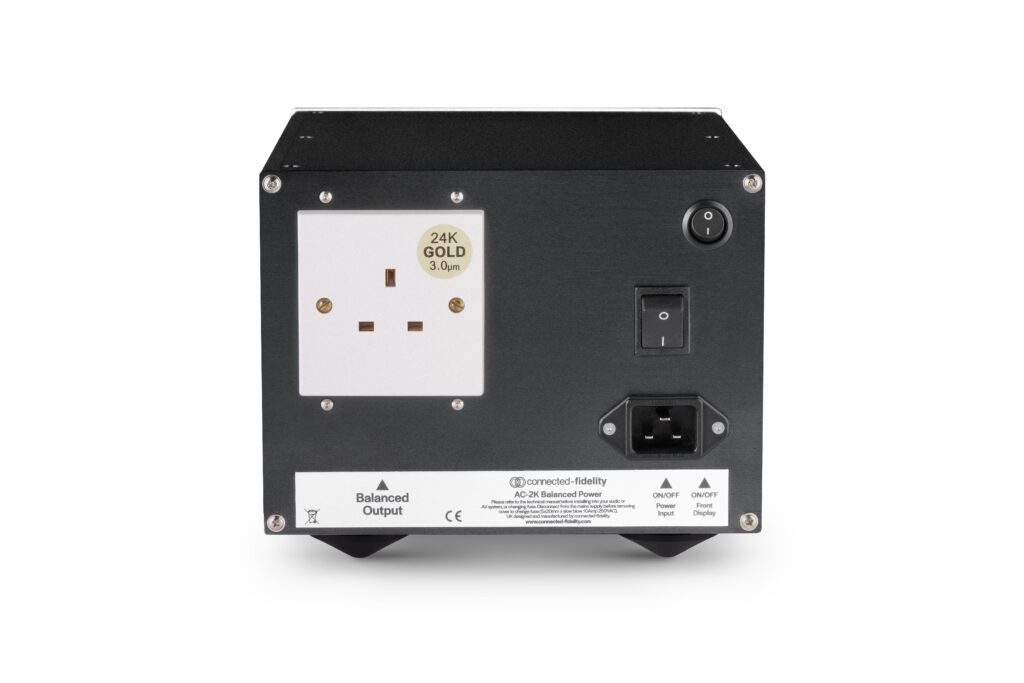
Given some solo piano recordings, changes were perhaps not so manifest, and while Kempff’s playing of the Beethoven Pathétique didn’t so easily show off the changes there was undeniably more delicacy and nuance. A switch back to standard mains now showed a flatter depth perspective and a sense that fast finger runs that punctuate the first movement were not so fluently played. And that’s one of the treasures of improving the quality of sound reproduction – as fidelity is increased, so too can be the quality of musicianship as appreciated by the listener.
The AC-2K was acquitting itself of the usual sins of mains treatment – the robbing of pace, slewing of timing or subtraction of micro-details – but with my system at least there was a small matter of addition, and that was in bass richness. While it would keep the pace ticking along from prog rock to trip hop, I felt it could tickle up the mid-bass with a touch of euphony.
Played at suitable concert volume, the Floyd live CD performance of The Wall kept the architectural solidity from the rhythm section foundation, with added focus to vocal parts, and in the background acoustic of a more convincingly cavernous Earls Court.
Happy hogging
This final result was only after trying various wiring combinations of DAC and upsampler plugged into either the same distribution board as the power amp from AC-2K; on their own direct from the wall; or with just the digital source components on the balanced supply. As suggested in previous trials, the Chord DAC/upsampler combo, with their pesky laptop SMPS supplies, do not make easy mains-sharing bedfellows with the amp and other analogue electronics, so were once again relegated to their own outlets without the blessing of balanced mains. Or to put it another way: the Chord SPM 1200C power amp was at its happiest when hogging the AC-2K alone.
Balanced mains from the AC-2K must count as one of those one-way dems, where the sonic benefits make switching back to the old normal an unwelcome journey. It offers cleaner, more highly resolving sound along with a mid-band declutter, without any fundamental cramping of pace and dynamics.
Technical specifications
- 2.0 kVA screened balanced transformer
- 4 x rubber isolation mounts
- UP/OCC internal wiring
- Deep cryogenic treatment for transformer, fuse, wiring and PCB
- Input socket 16 A IEC C20, gold-plated
- Output socket UK 3-pin, gold-plated
- Soft-start relay and resettable RCBO
- Dimensions 230 × 185 × 330 mm (whd)
- Weight 17.3 kg
- Price £2,890
Manufacturer
Connected Fidelity
UK Distributor
Air Audio
+44 (0)1491 629629
Tags: BALANCED MAINS SUPPLY CONNECTED FIDELITY AC-2K REFERENCE
By Andrew 'Harry' Harrison
More articles from this authorRead Next From Review
See all
Reiki Audio SuperSwitch Master Pro + Servant Pro
- Mar 27, 2024

Melco Audio N1-S38 music server
- Mar 27, 2024

Focal Utopia 2022 headphones
- Mar 27, 2024



